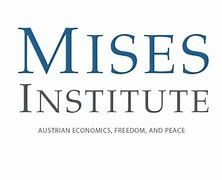The History Behind A Popular Investing Theory
[By Dr. David Edward Marcinko MBA CMP™]
http://www.CertifiedMedicalPlanner.org
[Publisher-in-Chief]
In his 1959 “Portfolio Selection,” Harry Markowitz PhD [father of MPT], said that investors should diversify against market risk but that determining the required return from such a group of diversified assets was another matter. Seven years later, economist Jack Treynor PhD wrestled with the issue of how investors can measure the expected risk in a portfolio against its expected return. Meanwhile, William Sharpe developed his own measure of risk and return known as the Capital Asset Pricing Model (CAPM) first published in the Journal of Finance in 1964 and discussed elsewhere on the ME-P.
A Seminal Paper
Treynor’s 1961 paper entitled “Toward a Theory of Market Value of Risky Assets” concluded that investors expect greater compensation for the larger risk they take in the stock market than they do from risk-free assets, such as Treasury bills. He called it the “equity risk premium” and created a method to predict it.
Fisher Black Collaboration
In 1973, Treynor collaborated with Fischer Black to devise a method for predicting the risk premium and to demonstrate its overarching importance in the behavior of capital markets as well as in portfolio selection. From 1969 through 1981 he furthered the work of many leading financial theorists, including Sharpe and Black, when he edited the Financial Analysts Journal.
Intellectual Band-Aid
In an interview about a decade ago, Treynor stated his belief that modern finance is preoccupied with statistical, rather than economic, thinking about risk. He explained that beta has come under attack in recent years because it is a statistical concept of risk. An economic concept of risk would have a lot more predictive value—it would be tied more intimately into fundamental analysis of companies and portfolios. He refers to beta as “just an intellectual Band-Aid.”
The Jensen Alpha
Treynor also described Bill Jensen’s alpha as looking at a market line established by a large number of funds and identifying those that had returns above the market line. Accordingly, a portfolio manager can increase his or her alpha by simply buying and selling larger positions of the same research recommendations.
Assessment
Black and Treynor developed a ratio of alpha to residual risk (return squared /risk squared), which shows that when you have everything else equal and you increase this ratio, you improve performance. And, they actually introduced the term Sharpe ratio.
Note: “It’s All About Odds,” Jonathan Burton, Dow Jones Asset Management, July/August 1997, pp. 20–28, Dow Jones Financial Publishing Corp., (732) 389-8700.
Conclusion
Your thoughts and comments on this ME-P are appreciated. Feel free to review our top-left column, and top-right sidebar materials, links, URLs and related websites, too. Then, subscribe to the ME-P. It is fast, free and secure.
Speaker: If you need a moderator or speaker for an upcoming event, Dr. David E. Marcinko; MBA – Publisher-in-Chief of the Medical Executive-Post – is available for seminar or speaking engagements. Contact: MarcinkoAdvisors@msn.com
OUR OTHER PRINT BOOKS AND RELATED INFORMATION SOURCES:





Filed under: Investing, Portfolio Management | Tagged: Capital Asset Pricing Model, CAPM, david marcinko, Fischer Black, Harry Markowitz, Jack Treynor, Treynor Ratio, William Jensen, William Sharpe | 3 Comments »



























